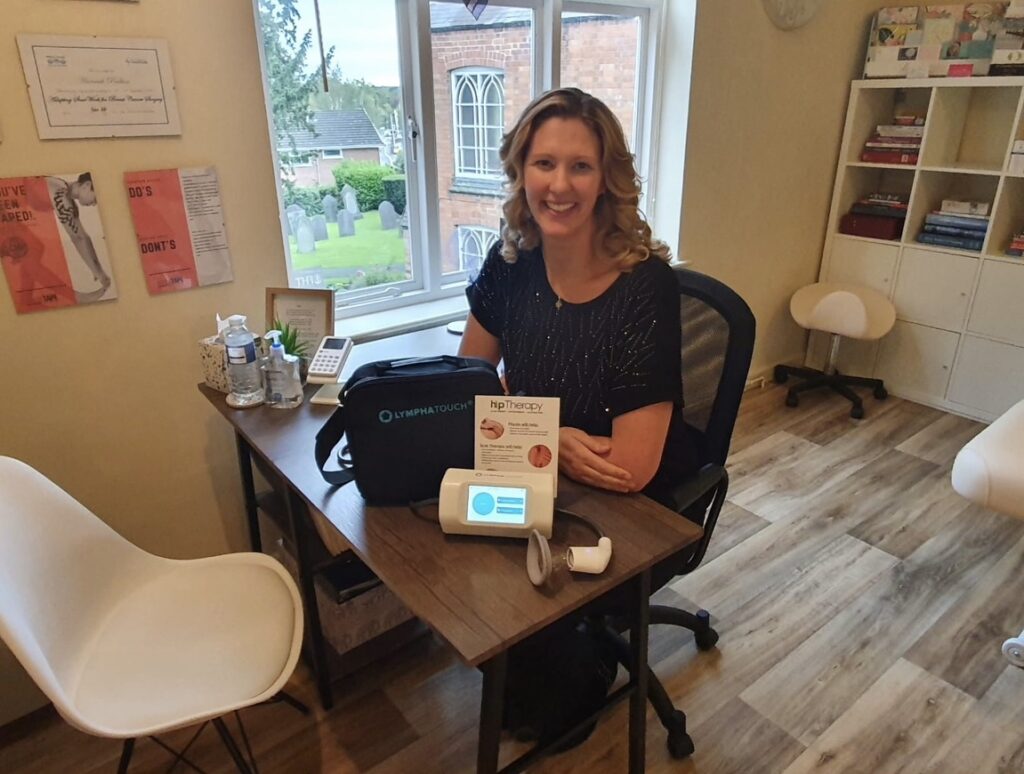With over 22 years of clinical experience, Hannah Poulton, a highly regarded Women’s Health Physiotherapist specializing in c-section scar rehabilitation, has helped thousands of women reclaim their health after birth. Her passion for effective, client-centered recovery methods has made her one of the leading voices in the field of postnatal physiotherapy.
And now, her commitment to improving outcomes has gone one step further:
Hannah is currently pursuing a PhD focused on scar therapy, with a specific emphasis on the benefits of using LymphaTouch in caesarean section recovery.
C-Section Rates Are on the Rise
Caesarean births are increasing steadily across Europe. In Finland, 19.6% of all deliveries in 2022 were by c-section (THL 2023). In the UK, the trend is even more pronounced:
According to NHS data, over 32% of births in England and Wales were caesarean sections in 2022—up from 25% just a decade earlier. These statistics reflect a growing need for effective, evidence-based scar treatment options for new mothers.
Yet, the aftercare for c-section scars often remains overlooked, despite their potential to cause pain, restricted movement, adhesions, and even emotional trauma.
Discovering a Game-Changer: LymphaTouch

Throughout her career, Hannah used advanced manual therapy techniques to treat scar tissue. But she wanted to offer faster, more transformative outcomes for her clients. In October 2020, she was introduced to LymphaTouch®, a Finnish health technology device that uses therapeutic negative pressure to lift and mobilize scar tissue, increase lymphatic drainage, and improve fascial mobility.
“From the very first treatment, I saw results. The scar tissue moved better, felt less tight, and best of all—my clients could feel the change too.”
Versatile, Effective, and Scientifically Measurable
One of the key advantages of LymphaTouch is its adjustable treatment settings, allowing for personalized care based on the scar’s location, age, and tissue response. The device supports objective, trackable progress:
- Pressure levels can be documented and increased as the tissue adapts
- Results are visible and measurable between sessions
- Clients often report softer scars, less pain, improved movement, and better breathing after just one session
“If a client starts at 90 mmHg and can tolerate 130 mmHg the next time, that’s a clear sign of tissue responsiveness. LymphaTouch gives me the tools to document and demonstrate real progress.”
Safe and Client-Focused Approach
LymphaTouch can be safely used on all types of healed scars, including c-sections, orthopedic scars, and more, as long as there is no inflammation, no sutures or staples, and the client has given consent.
Treatment typically begins in the surrounding tissue like the abdomen for a c-section scar, to help the client get used to the sensation. Then, the treatment progresses to the scar and surrounding fascial restrictions.
“What makes LymphaTouch so powerful is its adaptability. You can select the right pressure, treatment head, and technique for any scar, making it a core part of modern physiotherapy practice.”
Driving Innovation Through Research
So impactful has LymphaTouch been in Hannah’s clinical practice that she’s now dedicated her PhD research to studying the device’s role in c-section scar therapy. Her goal is to bring more clinical evidence to light on how lymphatic support and negative pressure therapy may can:
- Reduce post-surgical adhesions
- Improve tissue healing and hydration
- Support overall physical and emotional recovery in postpartum women
Final Word
“LymphaTouch delivers fast, long-lasting results. It’s simple to use, easy to explain, and clinically powerful. I truly believe it is the best device on the market for scar treatment, especially for c-section scars.”

Hannah Poulton is an English Womens Health Physiotherapist, specializing in scar treatment. Hannah owns HLP Therapy Limited, a private clinic located in the center of the UK. She also owns “The Positive-C-Section”, a company through which she runs a range of training courses on scar management. Hannah is also a co-founding member of the Everything Natal, a company who teach health and fitness professionals how to properly assess the postnatal population. Hannah started her physiotherapy career in the early 2000’s and for the last 10 years has specialized in women’s health and scar management, particularly for c-section scars. Hannah uses her professional knowledge, coupled with a personal experience of c-section birth to inform and empower individuals on their recovery journey.


